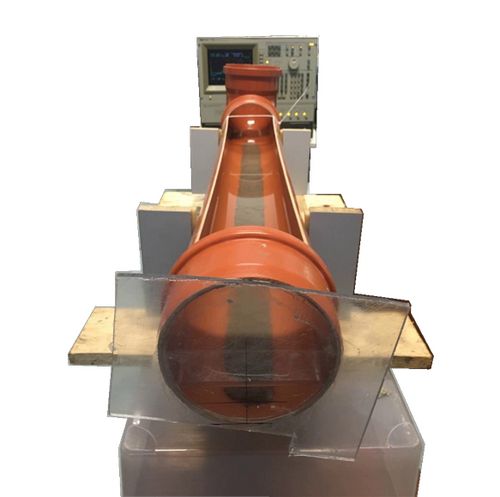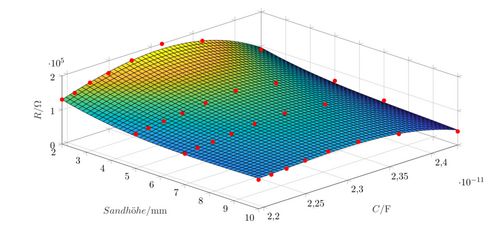
Sintering occurring in tunnel drainage is a significant problem.
In order to drain the mountain water from the tunnel, it is necessary to install drainage pipes. The mountain water, portlandite from the shotcrete of the tunnel wall and the pressure difference at the transition to the earth's atmosphere lead to the formation of calcite, and therefore to the formation of deposits in the pipes. For the maintenance of the tunnel it is necessary to remove the deposits in order to ensure the drainage of the mountain water. While it is possible to remove deposits with pressure brushes for thin layer thicknesses, it is necessary to use more time-consuming and expensive removal methods for thicker layers or to completely replace the pipe. For this reason it is important to recognize a deposit in good time.
Therefor should be used a measuring system, which simply can be added to the already existing drainage pipes.
This work discusses the application of a measuring system based on impedance measurements for the determination of deposit thicknesses in drainage pipes. After an introduction to the given problem and the characterization of the materials used (water, sand, U-PVC pipe) and the measuring device used (impedance analyzer 4194A from HP), the method of impedance spectroscopy is presented. The impedance can be measured by simply attaching electrodes to the outside of the pipe, so it is a non-invasive measuring system. The big challenge is interpreting the measured impedances and creating a model circuit that reflects the behavior of the measurements. Using an example of the measurement of the impedance spectrum of an apple, it is to be shown how one can deduce an associated model circuit from the recorded locus.
 Figure 1: Experimental setup of the PVC pipe, in the background the impedance analyzer.
Figure 1: Experimental setup of the PVC pipe, in the background the impedance analyzer.
The limitation of the method to the creation of a circuit model that is valid over the frequency spectrum leads to the impossibility of application when complex locus curves have been measured and consequently no adequate model can be found.
A new measuring method limited to certain frequencies will be described. The central assumption is that no longer a physically correct but rather a target-aimed model circuit is to be determined. This means a circuit whose parameters allow to estimate the desired sizes. In this way a measuring method was developed, which, despite considering a single frequency and a simple resistance-capacitance parallel connection as a model, allows to determine the height of the sand and of the water contained in the pipe.
 Figure 2: Resulting surface for calculating the sand height approximated to the measuring points (in red). x-axis: sand height, y-axis: C, z-axis: R.
Figure 2: Resulting surface for calculating the sand height approximated to the measuring points (in red). x-axis: sand height, y-axis: C, z-axis: R.
Keywords: Impedance tomography, impedance analyzer, circuit model, apple
June 8th, 2020